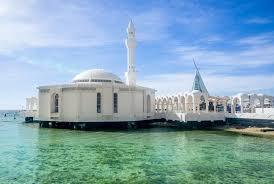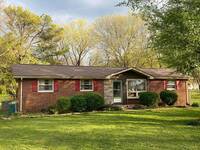
Present on the Red Sea coast, Jeddah is one of the prominent cities of Saudia Arabia. It holds its status as the second-largest city of Saudi Arabia as well as the major urban centre in the western KSA. Jeddah is also often referred to as ‘Gateway to Makkah’ because hajj and Umrah pilgrims arriving with Umrah Package first arrive in Jeddah as Makkah has no airport. Therefore, the city remains a busy spot for pilgrims throughout the year.
Jeddah has a very significant historical value. First served as a small fishing village, it evolved into a thriving port city and aided trades happening along the red sea i.e. connecting merchants between Mediterranean and Indian ocean. The history of Jeddah itself goes back to nearly 2,500 years, making it an ancient treasure for you to discover on your trip with 4 star 12 nights Chicago Umrah packages.
Here’s what you can discover regarding the ancient treasures of Jeddah.
Al balad.
- Also called as the ‘Old Jeddah’, Al-Balad district is the historic centre of modern Jeddah city.
- It is also a UNESCO World Heritage site since 2014.
- Al balad is famous for its unique architecture that features building structures made out of coral limestone and wooden latticework called ‘Rawasheen’ in the local language.
- The history of Al balad district is from the 7th century; flourishing as a major sea port of the Red Sea for the trades happening along the Indian ocean routes.
- Naseef House here is a must see. Built during the 1870s, it used to be the residence of a well-known merchant family of Saudia Arabia. In addition, Naseef House was also the place of stay for King Abdul-Aziz ibn Saud when he visited Jeddah in 1925. This house features nearly 100 rooms along with a distinctive tower developed for catching the cool sea breeze.
- Another prominent tourist attraction in Al Balad is the Al-Alawi Souk. It is one of the oldest and largest markets of Saudi Arabia, spanning over several kilometres and bring you a variety of local goods like;
- Saudi spices.
- Textiles.
- Local perfumes.
- Handicrafts.
Red sea.
Due to its strategic location, Jeddah's served as a key port city throughout history. The Red sea itself possess various ancient treasures that prominently include shipwrecks and ancient coral reefs. In addition, its rich marine biodiversity makes it a popular spot for diving and snorkelling and witnessing these archaeological gems yourself.
Jeddah Wall and Gates.
- During the 16th century, a wall and six gates were built around Jeddah to secure it against Portuguese attacks and Bedouin raids.
- With a 3-meter thickness and 5-meter height, the wall ensured protection for Jeddah spanning over an area of approximately one square kilometre.
- Bab Makkah is the gate facing the direction of Makkah. During that time, it was the main entrance for pilgrims of Hajj and Umrah heading to the city for the holy rituals. The current structure of Bab Makkah dates back to the Ottoman period.
- Bab Sharif was anther prominent gate present on southern side of the wall. It was mainly in the use of traders and merchants in Jeddah.
Al Shafi Mosque.
- Also called as the ‘Friday Mosque’, Al Shafi mosque is a prominent landmark in Saudia Arabia because of its historical significance.
- The history of Al Shafi mosque is from the 13th century during the Ayyubid period, making it one of the oldest mosques in Jeddah.
- The mosque is named after Imam Al Shafi who is founder of the one of major schools of Islamic jurisprudence.
- With a square minaret, wooden ceilings, and a large prayer hall; Al Shafi Mosque has a classic Islamic architectural style.
- There have been many restoration projects for the preservation of this mosque and contributed to its significance in Ancient Treasures of Jeddah.
Souq Al Khudra.
Souq Al Khudra is the traditional vegetable market in Jeddah where locals can buy fresh produces, spices, and traditional foods. If you want to see the city's historical role as a trading hub with goods arriving from various regions, then Souq al Khudra is a must visit.
Floating Mosque.
- The second name of Floating Masque is ‘Al Rahma Mosque’.
- The unique thing about this mosque is that it stands on stilts over the red sea, giving it a floating structure during high tides.
- It was recently constructed during 1985. That’s why you will see the blend of traditional Islamic architecture with modern elements in it.
- With a capacity to accommodate up to 2000 worshippers at a time, Floating Mosque features a large dome, a tall minaret, and an interior decorated with detailed calligraphy and decorative tiles.
Bait Al Balad Museum.
Housed in Jeddah’s traditional coral stone building, Bait Al Balad Museum offers a brief insight into Jeddah’s history, culture and architecture – all in one.
- The museum features artefacts from various periods. For instance;
- Traditional clothing.
- Household items.
- Tools used by merchants and fishermen.
- You can also see Jeddah’s nautical heritage as different models of traditional ships and navigational instruments are present inside in the museum.
Souq Al-Nada.
- Souq Al-Nada is a historic market present in Jeddah where you can shop for traditional jewellery and gold.
- This market has been a major hub of buying and selling precious metals and gemstones for ancient times.
- You can find a variety of traditional, historic and modern jewellery items here, reflecting the artistic heritage of the region.
Jeddah Corniche.
- Built with public recreational spaces like parks, beaches, and sculptures, Jeddah Corniche is a 30-kilometer-long coastal area along the Red Sea.
- If you want to have scenic views of the Red Sea; go for a walk with you partner; have a picnic with your family and enjoy sunset; Jeddah Corniche is the best place to spend your day relaxing.
- The iconic King Fahd Fountain (largest fountain in the word) is also present here. It can shoot water up to a height of 312 meters in air!
Khuzam Palace.
- As a historical and archaeological landmark in Jeddah, Khuzam Palace is present from the early 20th century.
- This palace was the residence of King Abdul-Aziz, the founder of modern Saudi Arabia, whenever he visited Jeddah.
- Khuzam palace now houses the Jeddah Regional Museum of Archaeology and Ethnography.
- You can see all sorts of artefacts, ranging from the Stone Age to the Islamic period here.
The Old Jeddah Islamic Port.
The Old Jeddah Islamic Port is among the oldest ports present on the Red Sea. Serving the trade routes of Indian Ocean, Africa, and Asia, the port is present from the early Islamic period and also facilitated pilgrimage travellers in old times. The ancient treasures you can find here include shipwrecks, pottery, and trade goods.
Qishla of Jeddah.
- The Qishla of Jeddah is a fort in Jeddah from the Ottoman period.
- This fort served as a military barracks and administrative building and was constructed during the late 19th century.
- With its prominent Ottoman architecture like thick walls and a central courtyard, the fort played a crucial role not only for the defense of Jeddah but also served as a centre for the Ottoman’s administrative authority in this region.
Bayt Jeddah.
Bayt Jeddah (the House of Jeddah) is a museum and cultural centre in a restored Hijazi house, with coral stone walls and complicatedly carved wooden balconies (also called as ‘Mashrabiyas’ in the local language).
You can also have a complete overview of the Saudi Arabian domestic life here because Bayt Jeddah showcases;
- Period Furnishings.
- Traditional Household items.
- Exhibits on local customs and traditions.
Al Ma'kal Garden.
Al Ma'kal Garden is a popular and historical garden in Jeddah because of its years long purpose of serving various social gatherings, religious celebrations, and community events throughout Jeddah’s history. You can find ancient date palms and traditional seating areas within this garden.
Tips for discovering the ancient treasures of Jeddah.
- Research the sites you are planning to visit in advance and gather all the necessary information about their opening hours, ticketing, rules and regulations.
- Hire local guides for an insightful and memorable trip experience.
- Carry local currency i.e. Saudi Riyals during your trip to shop for the products from local markets.
- Wear weather appropriate clothes and carry a refillable water to keep yourself hydrated.
- Use public transport for a better tour experience.
- Try traditional street food during your trip.
- Learn some basic Arabic phrases to interact with locals.
- Wear comfortable shoes because you will be walking a lot.
- Stay in good hotels to relax and unwind after spending your whole day outside.
- Be respectful to everyone.
Original Source of the original story >> Discover the Ancient Treasures of Jeddah






